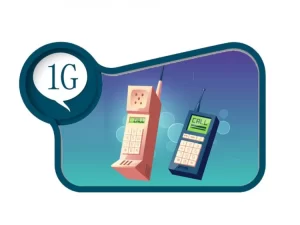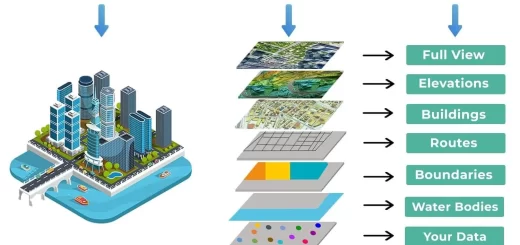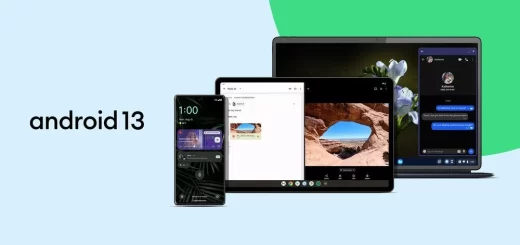1G mobile phones features, uses, advantages and disadvantages
1G network is the first generation technology of the wireless telephone technology (mobile telecommunications), It was the analog telecommunications standard that was introduced in the 1980s and continued until being replaced by 2G digital telecommunications, The antecedent to 1G technology is the mobile radiotelephone or 0G.
1G mobile phones
1G (First Generation) mobile phones represent the first generation of wireless cellular technology, It was introduced in the 1980s, and 1G was the beginning of mobile telecommunications as we know it today, offering basic voice services. 1G marked the beginning of mobile connectivity, laying the foundation for the more advanced systems that followed.
1G Mobile Phones advantages
1G or first generation technology is the technology utilized in the first wireless mobile phone handsets, when the mobile phone began to rise in popularity with the general public, It replaced the 0G network that featured mobile radiotelephones and technologies such as Mobile Telephone Systems (MTS), Advanced Mobile Telephone System (AMTS), Improved Mobile Telephone Service (IMTS), and Push to Talk (PTT).
1G technology was first used in Japan and spread quickly to the other parts of the world, 2G and 3G technology has built on the phenomenon of 1G technology, and although these later generations of technology are more effective, 1G technology provided the greatest scientific breakthrough. Introduced mobile communication, allowing people to make calls without being tethered to landlines.
1G wireless technology uses analog radio signals, Through the 1G network, The voice call gets modulated to a higher frequency of about 150MHz and up as it is transmitted between the radio towers, This is done using a technique called Frequency-Division Multiple Access (FDMA), the Main difference between the two mobile telephone systems (1G and 2G), is that the radio signals used by 1G technology is analog, while 2G technology is digital.
Both systems use digital signaling to connect the radio towers (which listen to the handsets) to the rest of the telephone system, but the voice is encoded to the digital signals in the 2G network during the call whereas the 1G network is only modulated to a higher frequency, typically 150 MHz and up, The inherent advantages of digital technology over that of analog meant that 2G technology replaced them almost everywhere.
However, the 1G network offers a few advantages over 2G technology, In comparison to 1G’s analog signals, 2G’s digital signals are very reliant on location and proximity, If the 2G handset made a call far away from a cell tower, the digital signal may not be strong enough to reach it.
The call made from a 1G network handset had poorer quality than that of the 2G handset but it survived longer distances, This is because the analog signal has a smooth curve compared to the digital signal, which has a jagged, angular curve, As the conditions worsen, the quality of the call made from the 1G handset would gradually worsen, but the call made from the 2G handset would fail.
1G cell Phones used the first successful standard network technology, The price of 1G mobile phones fell as demand slacked off with new, high-tech 2G phones on the market, This marked the beginning of mobile phones that were affordable to a large number of middle-class users.
The 1G mobile phones used a single, universal network standard, It is known as the Advanced Mobile Phone System (AMPS), This analog network saw adoption around the world and brought different cell phone service providers together under a single network, allowing for shared cost of network development and maintenance.
The cell phone networks were intended for industrial, military, and research applications, They used a series of dissimilar networks with very small broadcast areas, The idea of the universal network that started with 1G persists in today’s worldwide digital networks.
Compared to the earlier phones, which required wired connections to the telephone network, 1G phones gave the users true mobility for the first time, allowing the people to take the phones outdoors and in cars, Though bulky by modern standards, most 1G mobile phones were comparable in size to the standard telephone handset.
1G mobile phones which the service providers marketed directly to the individual users, Because of their cost, the phones were aimed at high-end consumers such as the executives and very wealthy, However, these customers required standardized monthly bills based on consistent service rates. 1G is the first step toward mobile communication infrastructure, leading to future advancements in cellular technology.
Disadvantages of 1G Mobile Phones
The main drawback of 1g technology is that it uses analog signals rather than digital signals, This is a less effective means of transmitting information, It is slower, and the signals can not reach as far in terms of secluded areas and such 2G and 3G signal is far more widespread. Lack of encryption or security for calls, and limited capacity, with frequent dropped calls in densely populated areas.
Poor voice quality due to analog signals, The analog signals are more likely to suffer interference problems, It makes the use of the mobile phone with the analog signal more difficult, the newer brands of 2G and 3G technology are more highly recommended, and 1G mobile phones appear bulky and awkward by modern standards.
1G technology compares unfavorably to its successors in terms of the overall connection quality, It has low capacity, unreliable handoff, It offers poor voice links, It has no security at all since the voice calls were played back in the radio towers, So, these calls are susceptible to the unwanted eavesdropping by the third parties.
Features of 1G Mobile Phones
1G networks were analog, meaning they transmitted voice in the form of radio signals without converting them into digital data, This made calls susceptible to noise and interference. 1G phones could only handle voice calls, with no support for text messaging, data services, or internet connectivity.
The first mobile phones were bulky, heavy, and had large external antennas, These devices were referred to as “brick phones.” Early cellular networks were limited in range and capacity, Call quality was poor, and the networks could only support a limited number of users at a time.
1G technology lacked encryption, making calls relatively easy to intercept, This lack of security was a significant issue, leading to eavesdropping concerns. The early mobile devices had poor battery performance, requiring frequent recharging, which limited their practicality for long-term use.
1G Technologies
- Advanced Mobile Phone System (AMPS) was the most widely adopted 1G technology, particularly in the United States, AMPS was first launched in 1983.
- Total Access Communication System (TACS) was used in the UK and other parts of Europe, it was similar to AMPS but used different frequency bands.
Transition to 2G
The limitations of 1G, especially the lack of data services and poor security, led to the development of 2G (second-generation) networks in the early 1990s. 2G introduced digital technology, which brought improvements in voice quality, security, and enabled SMS (text messaging) and data transmission.
You can follow science online on YouTube from this link: Science online
You can download Science Online application on Google Play from this link: Science online Apps on Google Play




